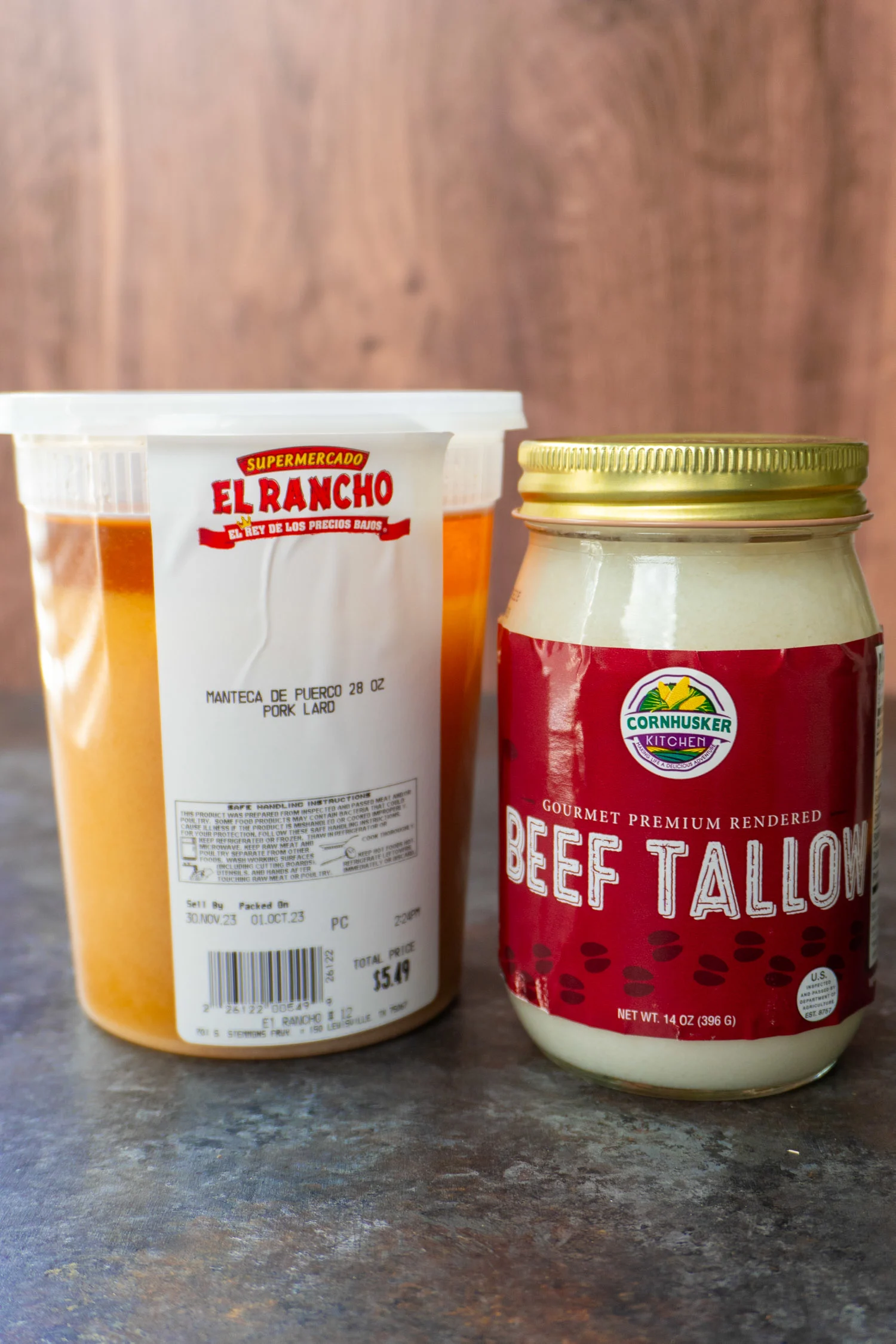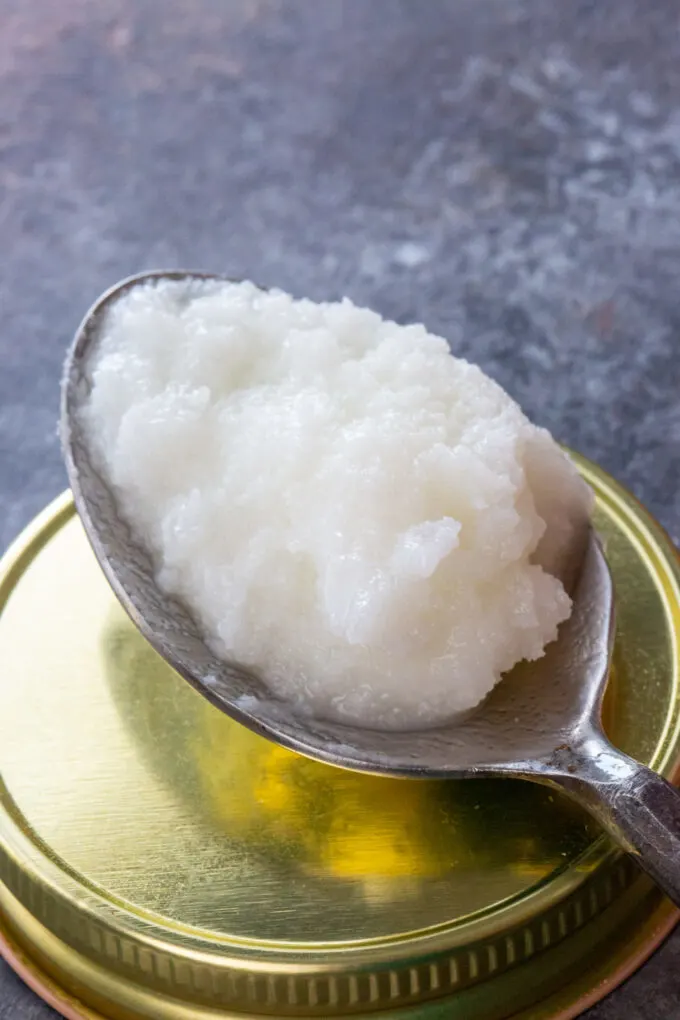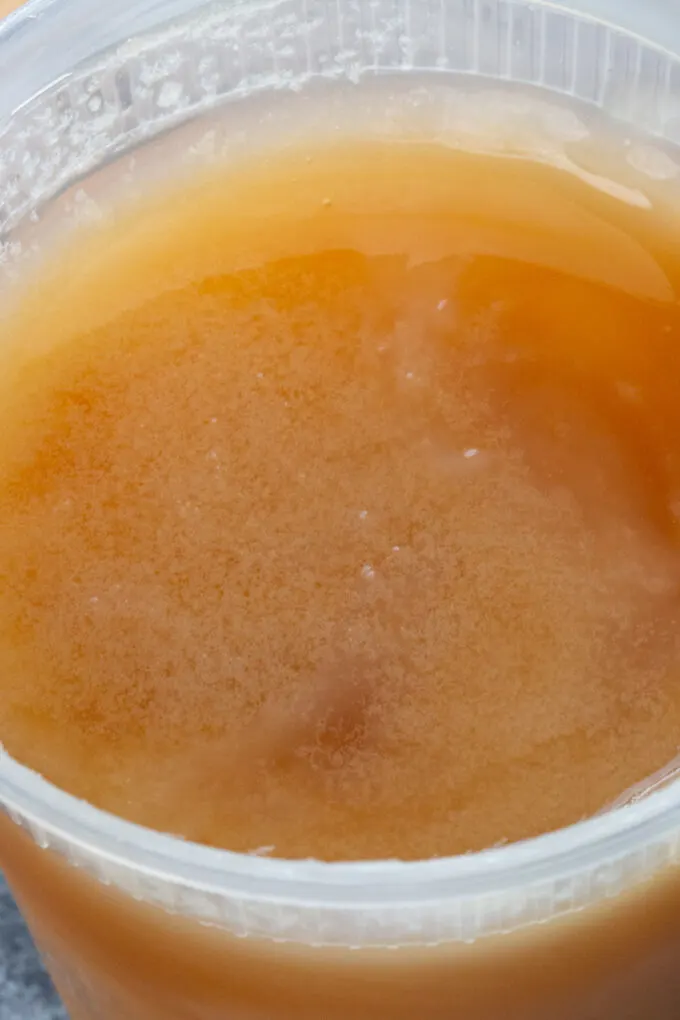For years, seed and vegetable oils have been touted as a healthier alternative to saturated fats like butter. However, it has come to light in recent years that oils like corn oil, canola oil, and sunflower seed oils might not be the best choice for our health.
Unfortunately, seed oils are almost ubiquitous in most processed foods because they are cheap and readily available. While it would be nearly impossible to totally eliminate these oils from your diet, it’s reasonable to want to make substitutions where you can, especially in your home.
Seed oils tend to contain a greater quantity of omega-6 fatty acids than heart-healthy omega-3 fatty acids. By consuming more omega-6s than omega-3s, we may be disrupting our bodies’ natural balance and putting us at risk for inflammation.

Seed oils are inexpensive and therefore often used by restaurants to fry foods. While you can’t control what a restaurant may fry their food in, you can control what you use in your own kitchen.
When cooking at home, many believe you are better off using animal-based fats and avoiding omega-6 heavy seed oils.
Let’s compare two of the most common animal fat choices for frying: lard and tallow.
Is Beef Tallow the Same as Lard?
No, beef tallow is not the same as lard…
Before processed seed and vegetable oils became widely available, it was much more common for people to keep the fat from meat after cooking and use it to fry foods. This also helped home cooks get the most value for their dollar, as it meant they used every part of a cut of meat they got from their butcher.
However, since it is much more convenient to get a bottle of canola oil off the shelf of your local grocery store, many people today don’t know much about the different types of rendered animal fats and how to use them.
Rendering fats is the process of removing any blood, water, connective tissue, or meat from the fat so you have pure fat to fry with. Take whatever fat you’re working with and heat it at a low temperature until all of the water is absorbed and the proteins have solidified. Then, strain to separate the solids from the liquid fat. Discard the solids and let the liquid cool.
While tallow and lard are both rendered animal fats, they are not the same thing.


Lard is rendered pork fat. (If you’re from the south you have probably already seen lard in the form of bacon grease in a coffee cup next to the stove.) But rendered lard can come from any part of the animal.
Tallow can come from lamb or beef, but beef fat is more popular. For our purposes, we are referring to beef tallow in this article. Rendered beef fat is seen often in barbecue, as pitmasters invent new ways to use trimmings.
You can make your own tallow and lard at home, or you can buy it already rendered in a container at grocery stores and Mexican supermarkets.
Composition of Fats in Tallow and Lard
The main difference you’ll notice immediately is both lard and tallow are semi-solid at room temperature because they are comprised of monounsaturated fat and saturated fat.
Monounsaturated fats are considered to be heart-healthy fats and may have certain health benefits such as fat-soluble vitamins when consumed in moderation.
Saturated fats were once thought to be universally unhealthy, but more recent research suggests that the relationship between saturated fats and health is more complex, and that saturated fat in moderation can be part of a healthy diet.
In their natural state, both tallow and lard do not contain any trans fats, which are a product of commercial hydrogenation and are generally regarded as having negative health effects.
Is it Better to Fry In Lard or Tallow?
While both tallow and lard are superior to seed and vegetable oils for frying, you might be wondering how they compare to each other.
You’ll want to consider these questions when deciding whether lard or tallow is better for your home:
- What temperature will you usually be frying the oil at?
- What types of fats are available in my area?
- How much will I need to fill my deep fryer or pan?
- How much will that amount cost and are you willing to pay for it?
- Certain religions prohibit the use of pork fat. Will this alter what you choose?

Smoke Points Of Tallow and Lard
At a certain temperature, your oil will start to smoke and this is known as the fat’s ‘smoke point’. Like most foods, if you see your cooking fat starting to smoke, you have a problem.
When heated to temperatures higher than their smoke point, a fat begins to break down and turn into unhealthy compounds. First, this can completely ruin the flavor of whatever you’re cooking as burnt oil or fat tastes burnt.
However, it can also have negative impacts on your health. When overheated, some fats and oils create harmful byproducts, including free radicals, trans fats, acrylamides, hydroxylinoleate, and aldehydes.
These toxic compounds can contaminate the foods fried in them. There is also evidence that inhaling cooking oil fumes may increase the risk of lung cancer.
Tallow has a higher smoke point than lard.
Lard reaches its smoke point at 374°, whereas tallow can be heated up to 400°.
Look at the recipe for whatever you are intending to fry. If your fryer needs to be set from 375° to 400°, use tallow. If you are setting your fryer lower than 375°, you can use lard.

Can I Use Beef Tallow in Place of Lard?
You can’t heat lard past 374°, but it is perfectly acceptable to use tallow at any temperature below 400°.
This makes sense in low heat cooking like pie crusts, biscuits, or pastries but could be a problem when frying fresh french fries.
Rather than buying two different products for cooking at different temperatures, it might seem like it makes more sense to just fry everything in tallow.
Or, if you are cooking for someone who can’t eat pork for religious reasons, lard may not be an option. This may work for some recipes, but not all.
General Flavor Differences In Tallow and Lard
Generally, lard has a more neutral flavor, while tallow is meatier and more savory. If you’re frying something like donuts, funnel cake, or anything else sweet, using tallow may give it an odd taste.
Leaf lard or leaf fat is a highly prized culinary product comprised of lard made from the visceral fat of the pig, which has an extremely mild flavor. The use of leaf lard in baking can result in a flakier and more tender texture compared to other fats. Due to its higher cost and more limited availability compared to regular lard, leaf lard is often considered a specialty product with a hefty price tag.
For savory recipes, however, you can use beef tallow or lard interchangeably, depending on your personal preference. Due to its higher concentration of saturated fats, beef tallow may create a crispier end product.
Also, depending on where you purchase your lard or tallow could provide you with stronger aromas…freshly rendered lard from a Mexican butcher will have a whisper of pork flavor, whereas commercially processed lard may be tasteless but in doing so may have undergone additional and potentially unwanted processing.

Is Beef Tallow Healthier than Lard?
In addition to different tastes and smoking points, beef tallow and lard have slightly different nutritional profiles as well.
Not all fats are created equal, and there are three main categories of fats: unsaturated fats, saturated fats, and trans fats. For a very long time, unsaturated fats have been considered “good” fats, while trans fats have been considered “bad” fats. Saturated fats were somewhere in between.
However, while scientists and nutritionists still unanimously agree that we should limit our consumption of trans fats, many are starting to reconsider how they have traditionally classified the healthfulness of unsaturated and saturated fats.
Many polyunsaturated fats are seed and vegetable oils that are high in omega-6s, while saturated fats from animals contain more omega-3s. However, many healthy oils—like olive oil and avocado oil—are high in unsaturated fats. Though it is primarily saturated fat, lard also contains a good deal of monounsaturated fats. Tallow is almost totally saturated fat.
When it comes to fats and calories, tallow and lard are almost indistinguishable. However, they do offer different nutritional profiles. Tallow contains more nutrients overall, including CLAs (conjugated linoleic acid), omega-3s, and Vitamin A.
Lard offers less variety of nutrients, but it does contain a high concentration of Vitamin D, which many people do not get enough of.
To be clear, no one is saying that regularly consuming a diet high in fried foods is “healthy.” Fats are a necessary part of our diet, but achieving a healthy diet is all about achieving the correct balance of macro and micronutrients.
Consuming too much of any kind of fat can lead to obesity and increase your risk of developing other chronic conditions, including heart disease, diabetes, and even cancer.
Fried foods should be an occasional treat and not a daily feature in your diet. When you do indulge, however, there are ways to do so with less negative health consequences.

Is Beef Tallow Cheaper than Lard?
Pound for pound, unhydrogenated organic tallow fat and lard are around the same price.
With high inflation, many households are trying to conserve costs wherever they can. Vegetable oils are cheap, and many home cooks might hesitate about making the switch to a potentially more costly product.
If you don’t want to go through the process of making your own lard or tallow, there are options for you to purchase pre-rendered animal fats in jars or tubs.
Hydrogenated, processed lard will be the cheapest and easiest to find but be aware that this process creates transfats which might defeat the purpose of choosing a “natural” product. Purchasing freshly rendered pork fat from a butcher or Hispanic grocer is a great way to cut costs, avoid the task of rendering raw fat yourself, and ensure that no transfats exist in your lard.
If you want to get the most benefits from using animal fats in frying, you’ll want to use minimally processed organic fat saved from trimmings you collect yourself.
These can be simply stored in the freezer until you feel like rendering the fat down yourself over high heat in a standard stock pot. High temperature melts the hard fat of these different animals into liquid which you can strain, cool, and store in jars for future cooking.
Rendering fat trimming from the meat you cook can help you save on your overall grocery costs and get the most value out of the meat you buy. If you’re going to be cooking beef or pork anyway, you might as well save the fat to use for other cooking applications.
One of the best ways to get started is to save the bacon fat from your cooked bacon in a cup next to the stove. Another method that many households may have access to is saving the fat trimmings from popular barbecue cuts such as pork belly and brisket from grass-fed cows or pasture-raised pigs.
Conclusion: When Are Lard and Tallow Worth It?
Is it possible to avoid processed seed and vegetable oils all the time? No. When you go out to eat, most of the fried foods you encounter will have been fried in seed or vegetable oil, but we can control what we use in our own homes to balance out our intake.
The best way to immediately start using traditional fats like lard and tallow is to render leftover solid fat at home. It’s easy, cheap, and already a part of the meat you are purchasing for family dinners.
Purchasing natural fats from a butcher is a good alternative to making your own rendered animal fat and is a great choice for avoiding highly processed commercial products that may have transfats from hydrogenation.
If you need a larger amount of fat for deep frying—like if you are frying a turkey for a large Thanksgiving dinner or participating in a neighborhood fish fry—using peanut, soybean, or canola oil might make more sense as a one time affair.
Remember, everything in balance can be part of a healthy life.

James
Tuesday 2nd of April 2024
Love your articles and the way you explain things - great job!
Lauren
Wednesday 10th of January 2024